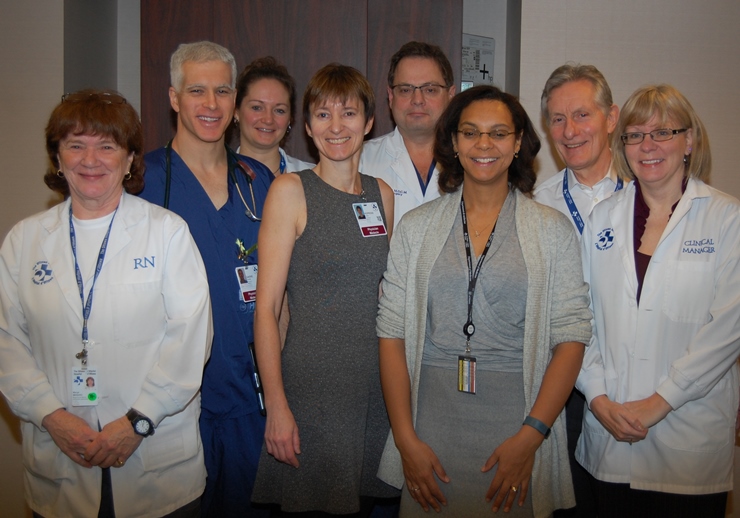
A team of doctors, nurses, administrators and others are making changes to reduce the risk of infection for surgical patients whose blood sugars are high.
Patients whose blood sugar is high when they go for surgery have a much higher risk of surgical site infections (SSIs). That’s why Dr. Laura Hopkins has been leading a move to identify and manage blood sugars in patients headed for surgery.
“Managing blood sugars is part of our strategy to reduce SSIs,” said Dr. Hopkins, gynecology-oncology surgeon. “We are focusing on the 13 percent of surgical patients with diabetes and the additional 10 to 30 percent who have undiagnosed diabetes or a risk of rising blood sugars during surgery.”
Focusing on those high-risk patients should help bring down The Ottawa Hospital’s rate of SSIs. Dr. Hopkins and her team have worked hard over the past year to develop new screening and monitoring processes. Starting Feb. 2, the gynecology-oncology team will put the new processes into action. Once the kinks are worked out, the processes will be rolled out for other services.
“This will be one of the most complex and collaborative system changes that we have seen since the hospital joined NSQIP in 2010,” she said. The National Surgical Quality Improvement Program provides data that helps the hospital plan its quality improvement measures, such as reducing SSIs.

With the new processes, patients’ blood sugars will be managed at three points:
- Before surgery: Patients are screened with a test that shows if blood sugars have been in control or high recently. “Knowing this lets us help patients get their blood sugars down before surgery, and it identifies which patients need glucose tests during and after surgery,” said Endocrinologist Dr. Janine Malcolm.
- During surgery: Blood sugars often rise as part of the body’s natural response to stress, and the rise can be even greater in patients with diabetes. “By identifying patients at risk, we can monitor blood-sugar levels during surgery and give insulin if the levels get too high,” said Anesthesiologist Dr. Sylvain Gagné.
- After surgery: Keeping blood sugars under control, especially during the first three days, reduces the risk of SSIs. “We have updated our standard protocol to use long-acting as well as short-acting insulin,” said RN Filomena De Sousa. “We are also introducing an alert system. When blood glucose is too high, the nurse alerts the physician to review the patient’s glucose management.”

Support patient care and research at
The Ottawa Hospital


 To reset, hold the Ctrl key, then press 0.
To reset, hold the Ctrl key, then press 0.